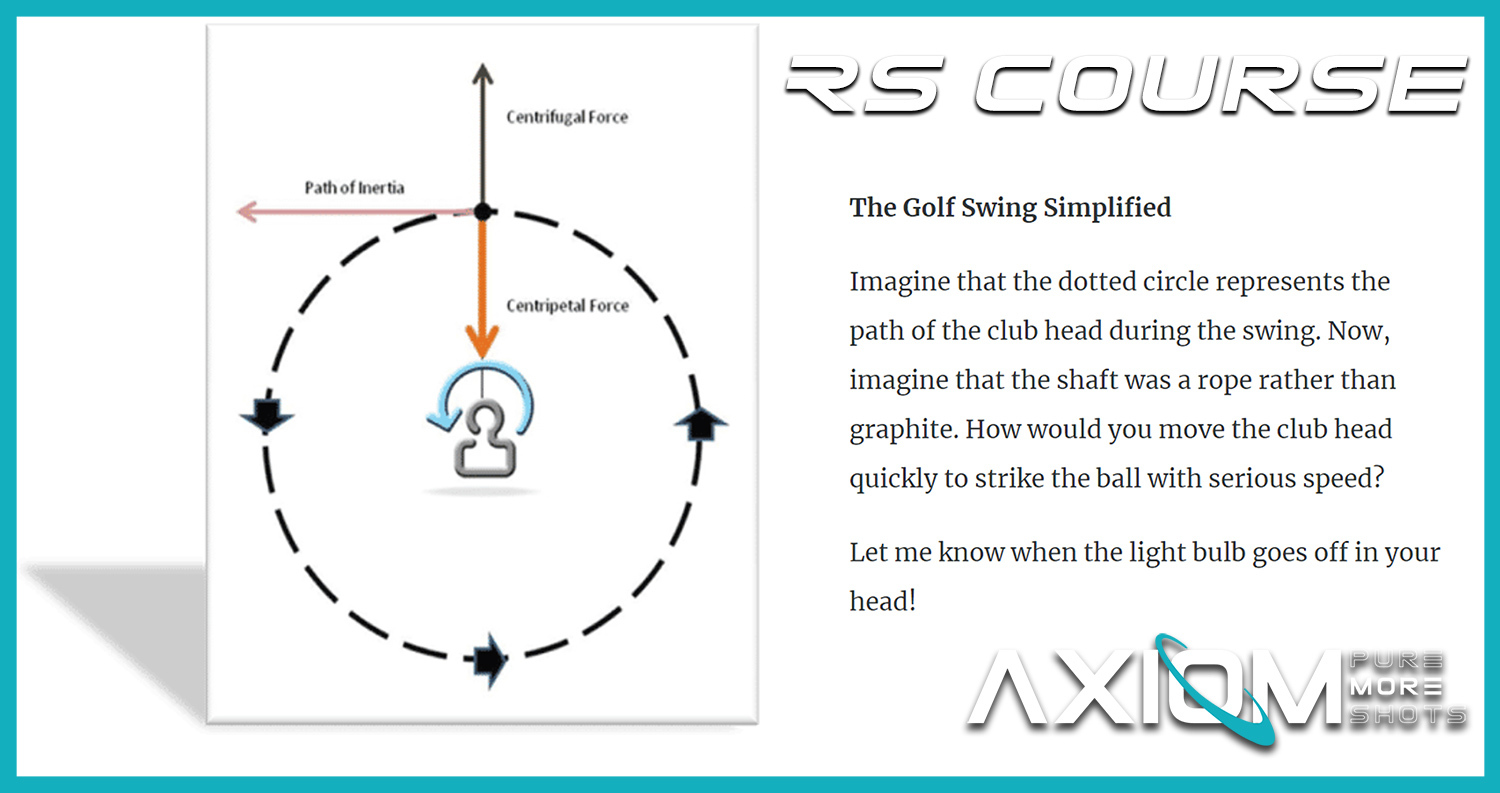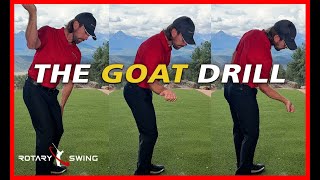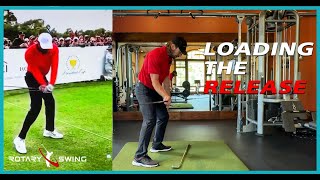Watch part 2 now to see how you're moving your body in the opposite direction of the pros!

Scenario 1
There's been some confusion when we use the term "shoulder elevation" in relation to the golf swing.
One student in particular explained that he suffered from getting the club very deep, very early in his golf swing. He said he was trying to keep his arms very passive, but the club still kept getting stuck way behind him very early in the golf swing.
This is a common thing. Just like anything in life, too much of a good thing is not very productive for us.
The issue here is that keeping the arms pinned to the body is not what we mean by "passive arms." If you keep your arms pinned to your body and rotate your chest by pulling the right shoulder blade behind you as we discuss in the Takeaway lesson, the club will end up way inside which causes a couple of problems.

Scenario 2
If you continue to pull the club around, it ends up very flat and laid off, with your arms trapped way behind your body. That's Scenario Number 1.
The second scenario, which is the more common of the two in our online lessons, is when you get the club too far inside. The club gets lifted late in the backswing and gets up across the line. It's a terrible position to try to recover from, completely disengaged from the core and the rest of the body.
From this position you're not going to be able to use any of the weight transfer lessons because you're completely disconnected from your lower body. The only force of movement is going to come from the top.
We talk a lot about "passive arms," but obviously that doesn't mean the arms have no role to play in the golf swing.
They do remain passive, but what we mean by remaining passive is simply that you never actively move your arms in a horizontal direction around your body.
Even when you're turning your body, you want to keep your arms from working across your chest and your core, getting trapped way behind you. The role of the arms in the golf swing is to stay directly in front of the body throughout the golf swing.
What is Shoulder Elevation?

Shoulder elevation
Let's start with what it's not. Shoulder elevation is not a shrugging motion. You're not lifting your shoulders or your shoulder blades. Shoulder elevation refers to raising your arms in a vertical plane, from belt-buckle height to the bottom of the chest.
At no point in the golf swing do you want to shrug your shoulders up toward your ears. If you allow that shrugging motion to occur, your shoulders raise up, your arms flail out, and you get separated from your body, leaving you in a horrible position to hit the golf ball. It's not a very powerful position at all.

Shoulder elevation - arms stay in front
When we talk about proper shoulder elevation, we mean that the arms stay directly in front of the sternum and the shoulders hinge to elevate the arms a couple of inches over the course of the backswing. The shoulders themselves stay down. The arms remain straight - we don't want any elbow flexion at this point - and the arms elevate a couple of inches.
Stand up and give it a try. Get into your stance and put your arms out in front of your body with the hands an inch or two apart. Pull the right shoulder blade behind you as you get a couple inches of shoulder elevation - meaning that you elevate your arms from the shoulders, not that the shoulders themselves are elevated.
Look at the photo on the left to see what that does with your hand position. This is very different than keeping your arms pinned to your body and allowing them to be ripped inside as you turn.
Review the Bucket Drill

This position spills the "water"
Remember the Bucket Drill? It's been on the website for a long time, and it shows exactly what we're talking about here.
If you keep your arms pinned to your body and rip your right shoulder around behind you, you're going to spill the "water" in your bucket.
On the other hand, if you allow proper shoulder elevation to occur as you rotate, you it's just like you're passing the bucket to someone behind you, without spilling it. Your shoulders remain down, without shrugging or moving up toward your chin.
Again, with incorrect shoulder elevation your arms end up very deep and trapped. It becomes impossible to use your lower body or your core to successfully shift back onto the golf ball on your transition into the downswing. The force of movement has no choice but to come from the upper body, and we know all the problems that come from that.
Take a few minutes to go back and review the Bucket Drill to ingrain the feeling of doing a proper shoulder elevation.
Stay Connected to Your Core
Hopefully this clears up the confusion around shoulder elevation. Remember, it's very much the arms staying directly in front of the sternum, elevating two to three inches while you're rotating your core. The driving force in the backswing is pulling that right shoulder blade behind you.
The arms elevate two to three inches directly in front of the chest. Make sure the shoulder blade glide is occurring at the same time - you don't want to just start flailing your arms up and out to start the golf swing because, again, you become disconnected.
It's almost like teaching yourself to pat your head and rub your belly at the same time. With a little practice, you can learn to do that without even thinking about it. Shoulder elevation is the same thing. Your need to learn to do the elevation directly in front of your chest while pulling that right shoulder blade back, and then you'll see how the two blend together into a single, smooth motion.
















































































































































































































































































































































































































































































 Scenario 1
Scenario 1 Scenario 2
Scenario 2 Shoulder elevation
Shoulder elevation Shoulder elevation - arms stay in front
Shoulder elevation - arms stay in front This position spills the "water"
This position spills the "water"